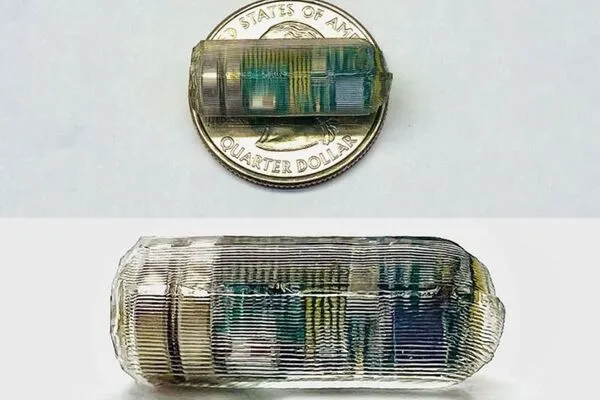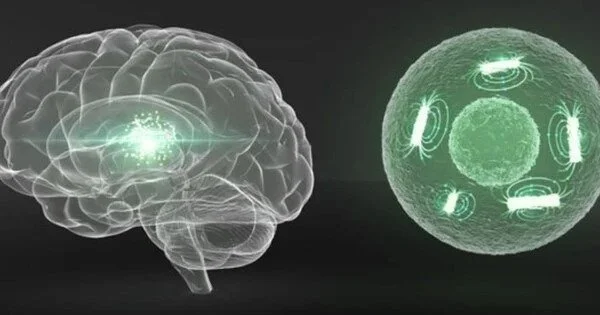Ingestible sensors can be very helpful in pinpointing gastrointestinal (GI) difficulties. These sensors are small devices that can be swallowed and then pass through the digestive system, collecting data on the way.
The data collected by the sensors can provide doctors with important information about the functioning of the GI tract. For example, they can measure pH levels, temperature, and pressure, which can indicate if there is an obstruction or inflammation in the digestive system. The sensors can also detect the presence of certain substances, such as blood or bacteria, which can indicate infection or other issues.
Engineers at MIT and Caltech have demonstrated an ingestible sensor whose location can be tracked as it moves through the digestive tract, a breakthrough that could help doctors diagnose gastrointestinal motility disorders like constipation, gastroesophageal reflux disease, and gastroparesis more easily.
The tiny sensor detects a magnetic field generated by an electromagnetic coil outside the body. Because the strength of the field varies with distance from the coil, the sensor’s position can be calculated based on its magnetic field measurement.
The researchers demonstrated that they could use this technology to track the sensor as it moved through the digestive tracts of large animals in the new study. A device like this could provide an alternative to more invasive procedures like endoscopy, which are currently used to diagnose motility disorders.
“Many people around the world suffer from GI dysmotility or poor motility, and having the ability to monitor GI motility without having to go into a hospital is important to really understand what is happening to a patient,” says Giovanni Traverso, a gastroenterologist at Brigham and Women’s Hospital and the Karl van Tassel Career Development Assistant Professor of Mechanical Engineering at MIT.
Our system can support the simultaneous localization of multiple devices without compromising accuracy. It also has a wide field of view, which is essential for human and large animal research.
Azita Emami
Traverso is one of the senior authors of the new study, along with Azita Emami, a professor of electrical engineering and medical engineering at Caltech, and Mikhail Shapiro, a professor of chemical engineering at Caltech and an investigator of the Howard Hughes Medical Institute. Saransh Sharma, a graduate student at Caltech, and Khalil Ramadi, a former MIT graduate student and postdoc who is now an assistant professor of bioengineering at New York University, are the lead authors of the paper, which appears today in Nature Electronics.
A magnetic sensor
GI motility disorders, which affect approximately 35 million Americans, can occur in any part of the digestive tract, resulting in a failure of food to move through the tract. They are typically diagnosed using nuclear imaging studies or X-rays, or by inserting catheters containing pressure transducers that detect GI tract contractions.
The MIT and Caltech researchers wanted to develop a less invasive method that could be performed at the patient’s home. Their plan was to create a capsule that could be swallowed and then send out a signal that revealed where it was in the GI tract, allowing doctors to determine which part of the tract was causing the slowdown and better treat the patient’s condition.
To accomplish this, the researchers took advantage of the fact that the field produced by an electromagnetic coil weakens predictably as the distance from the coil increases. The magnetic sensor they created, which is small enough to fit in an ingestible capsule, measures the magnetic field around it and uses that information to calculate its distance from a coil located outside the body.
“Because the magnetic field gradient uniquely encodes spatial positions, these small devices can be designed in such a way that they can sense the magnetic field at their respective locations,” Sharma says. “After the device measures the field, we can calculate the device’s location.”

The system also includes a second sensor that remains outside the body and serves as a reference point to accurately pinpoint a device’s location inside the body. This sensor could be taped to the skin, and researchers could accurately calculate where the ingestible sensor is in the GI tract by comparing the position of this sensor to the position of the sensor inside the body.
A wireless transmitter in the ingestible sensor sends the magnetic field measurement to a nearby computer or smartphone. The system’s current version is designed to take a measurement whenever it receives a wireless trigger from a smartphone, but it can also be programmed to take measurements at specific intervals.
“Our system can support the simultaneous localization of multiple devices without compromising accuracy. It also has a wide field of view, which is essential for human and large animal research” Emami states.
The sensor’s current version can detect a magnetic field from electromagnetic coils at a distance of 60 centimeters or less. The coils could be placed in the patient’s backpack or jacket, or even the back of a toilet, allowing the ingestible sensor to take measurements whenever it comes into contact with the coils.
Location tracking
The researchers put their new system to the test in a large animal model, inserting the ingestible capsule into the stomach and then tracking its movement through the digestive tract over several days.
In their first experiment, the researchers delivered two magnetic sensors connected by a small rod, allowing them to determine the exact distance between them. They then compared their magnetic field measurements to this known distance and discovered that they were accurate to a resolution of about 2 millimeters – significantly higher than the resolution of previously developed magnetic-field-based sensors.
The researchers then conducted tests with a single ingestible sensor and an external sensor attached to the skin. The researchers demonstrated that they could track the ingested sensor as it moved from the stomach to the colon and then was excreted by measuring the distance from each sensor to the coils. The researchers compared the accuracy of their strategy to X-ray measurements and discovered that it was accurate within 5 to 10 millimeters.
“Using an external reference sensor helps to account for the problem that every time an animal or a human is beside the coils, there is a likelihood that they will not be in exactly the same position as they were the previous time. In the absence of having X-rays as your ground truth, it’s difficult to map out exactly where this pill is, unless you have a consistent reference that is always in the same location,” Ramadi says.
According to the researchers, this type of monitoring could make it much easier for doctors to determine which part of the GI tract is causing a slowdown in digestion. “I believe that the ability to characterize motility without the use of radiation or more invasive device placement will lower the barrier for people to be evaluated,” Traverso says.
The researchers now hope to collaborate with others to develop manufacturing processes for the system and characterize its performance in animals, with the goal of eventually testing it in human clinical trials.














